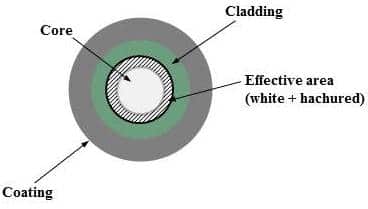Perhaps while staring at your microscope during long imaging sessions, you have noticed that written on your objective lens is not only the magnification but also another number such as NA=1.4. If you’ve ever wondered what that number means, we can help! Meet the numerical aperture (NA for short)!
Numerical Aperture: Not a number for the casual user
While the numerical aperture is critical to image resolution, it is not a number the most casual microscope users understand. Why not? Perhaps because if you are a casual user using one microscope, you are stuck with the objective lens that you have and you can’t change the numerical aperture of your lens.
Equation warning! Run and hide!
Most of the time, the explanations of numerical apertures involve equations. Just to give you an advance warning, I will show you two equations. Don’t worry, they are short ones and shouldn’t be too scary!
In compensation for making you look at equations, I will tell you why sometimes you use water or oil immersion objectives. I think that’s a fair trade!
Why you should care about the numerical aperture
So, why should you care about the numerical aperture of a lens anyway? When you are planning your experiment, you probably think about what magnification you are going to use, after all, you need to be able to see the structure you are interested in
Magnification is nothing, however, without enough resolution to distinguish your structure of interest from everything else in the sample (read Erin’s Guide To Resolution).
Check before you buy
A high magnification objective lens with a low numerical aperture will have low resolution. Most microscopy companies do their best to make the numerical aperture as high as possible on their lenses- but if you are in a position where you need to buy a new objective lens for your microscope, be sure to check the numerical aperture before you buy.
What exactly is it?
Now that you know why you care about the numerical aperture, back to the original question, what exactly is it?
The numerical aperture is a number (without units) that indicates the angles over which light can enter the lens. The larger the numerical aperture, the more light can enter the lens, and the more detail you can see. When more light enters the lens, the image becomes brighter.
How oil and water affect the numerical aperture
What does this have to do with water and oil immersion lenses? When light leaves your sample and enters the air (or water or oil) it refracts. Refraction simply means that the angle of light changes by some degrees- it changes direction slightly. When you use a water or oil immersion lens, you change how much the light refracts when it leaves the sample. This increases the theoretical limit of the numerical aperture of your lens. How much does it change it?
\text{NA} = n \times sin (\alpha)where \text{NA} = numerical aperture
n = index of refraction of the medium (eg. air, water, oil, etc.)
\alpha= the half angle of the cone of light that can enter the lens.
Nothing is perfect
The index of refraction of air is 1.0, water is 1.33, and oil is 1.56. That’s a whopping 50% improvement from air to oil! Of course, this equation just tells you what numerical aperture is theoretically possible. As I said above, microscopy companies do their best, but nothing is perfect, not even in the world of microscopy.
Resolution
To give you an idea how such a change relates back to resolution:
R = \lambda /(2\text{NA})where R = resolution
\text{NA} = numerical aperture
\lambda = wavelength of light
The larger your NA gets, the smaller your resolution gets and the more detail you will be able to see.
So, next time you are sitting in the microscope room, take another look at that ‘other number’ on the objective lens with confidence! You earned it!
Originally published July 23, 2013. Reviewed and updated July 2021.







